I've generated a geodesic sphere for opengl rendering following a question on here and I'm trying to put texture on it. I came up with the following code by reversing an algorithm for a point on a sphere:
//complete circle equation is as follows
///<Summary>
///x = r * sin(s) * sin(t)
///y = r* cos(t)
///z = r * cos(s) * sin(t)
///</Summary>
float radius = 1.0f;
//T (height/latitude) angle
float angleT = acos(point.y / radius) ;
//S (longitude )angle
float angleS = ( asin(point.x / (radius * sin(angleT)))) + (1.0f* M_PI);
float angleS2 =( acos(point.z / (radius * sin(angleT)))) + (1.0f * M_PI);
//Angle can be 0-PI (0-180 degs), divide by this to get 0-1
angleT = angleT / (M_PI);
//Angle can be 0-2PI (0-360 degs)S
angleS = angleS / ( M_PI *2 );
angleS2 = angleS2 / ( M_PI *2 );
//Flip the y co-ord
float yTex = 1 - angleT;
float xTex = 0.0f;
//I have found that angleS2 is valid 0.5-1.0, and angleS is valid (0.3-0.5)
if (angleS < 0.5f)
{
xTex = angleS;
}
else
{
xTex = angleS2;
}
return glm::vec2( xTex , yTex);
As you can see, I've found that both versions of calculating the S angle have limited valid ranges.
float angleS = ( asin(point.x / (radius * sin(angleT)))) + (1.0f* M_PI);
float angleS2 =( acos(point.z / (radius * sin(angleT)))) + (1.0f * M_PI);
S1 is gives valid answers between x texture co-ords 0.3 and 0.5 and S2 gives valid answers for between x texture co-ords 0.5 and 1.0 (Conversion to co-ords omitted above but present in first code example). Why is it that neither formula is giving me valid answers for under 0.3?
Thanks
Will
Correct on this side
 The weird border between working and not, probably caused by opengl's interpolation
The weird border between working and not, probably caused by opengl's interpolation
 Reversed section
Reversed section
 The image being used
The image being used
 Edit: Here is the seam
Edit: Here is the seam
